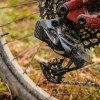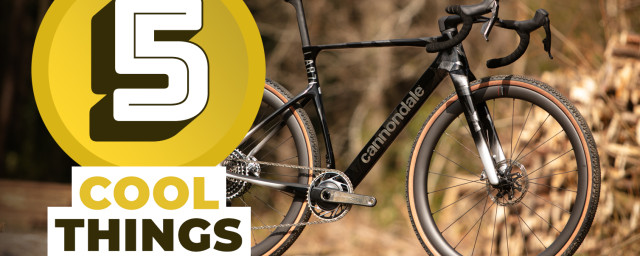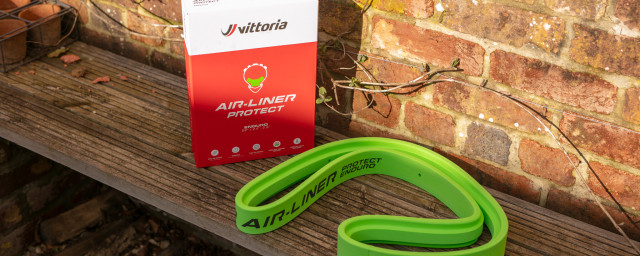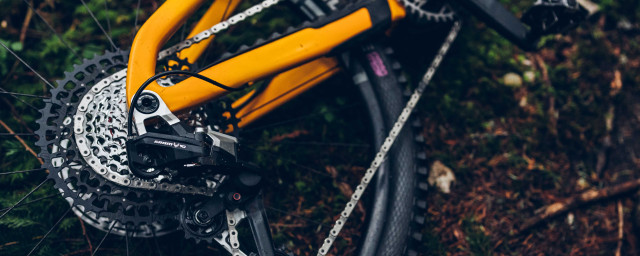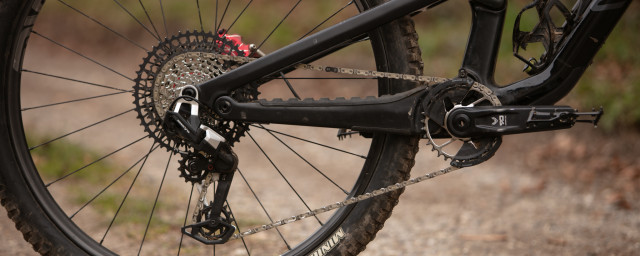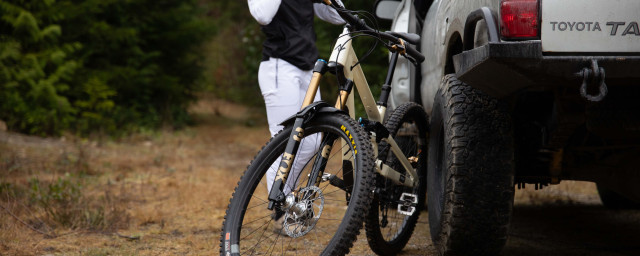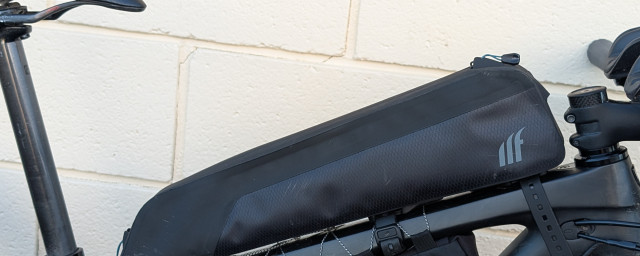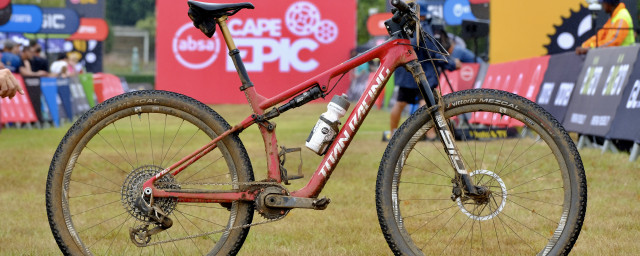SRAM GX Eagle 12spd drivetrain first ride

SRAM's new GX Eagle drivetrain has landed, offering the huge range of a 10-50T cassette with 12 ratios at a fraction of the price of the high-end XX1 and X01 Eagle groups. Is the rise of the single-ring drivetrain now unstoppable? I rode the new groupset in the mountains around Lake Garda to get some first impressions.
The Eagle has (already) landed
If you're unfamiliar with SRAM's 12spd XX1 and X01 Eagle groupsets, they take the single front chainring concept further than ever before, offering a 500% gear range that's the equal of some common double chainring setups from the likes of Shimano. SRAM Eagle was meant as a riposte to anyone that thought the 420% range of their 11spd offerings wasn't enough for big mountain riding, but it also afforded SRAM the opportunity to refine some elements of their existing 11spd single-ring groups.
The work that was done on the high-end XX1 and X01 Eagle groups is very impressive. I'll be reviewing X01 Eagle in full soon, but it offers much smoother shifting, reduced wear and a small overall weight increase despite adding that huge 50T cog to the cassette. The only issue is that prices start at just under a thousand pounds for a complete set of the cheaper X01 Eagle - and no 11spd components will work with the new drivetrains.
Half price, fully featured
That puts it firmly out of reach of many riders, something GX Eagle rectifies. With prices starting from £425 for a complete groupset, it's less than half the price of SRAM X01 Eagle at £977 but it manages to pack all the essential features.
The most eye-catching of those has to be that huge cassette. Like all other SRAM single-ring drivetrains, it uses the specific XD driver body on the hub to allow a 10T smallest cog rather than the 11T item found with traditional driver bodies. All the ratios on the cassette are exactly the same as on SRAM's 11spd 10-42T cassette, except for the addition of that giant 50T ring as the 12th ratio.
On the XX1 and X01 Eagle cassettes, the first 11 ratios are machined from a single piece of steel, with the 12th gear made from aluminium that riveted to it. Obviously, that's a hugely expensive way of doing it, despite being extremely hardwearing. The GX Eagle cassette is instead made by riveting individual cogs together. It's heavier - a claimed 450g vs the actual 356g for X01 Eagle - but as it costs £170 rather than £250, that's to be expected.
The chain is the key
While the cassette might be the party piece, SRAM says the real secret to the additional refinement and lifespan of Eagle over previous groups is actually down to how the chain is made. By using a highly involved process that stamps out individual links in 37 separate stages, the inner links of the chain are much smoother than before. That allows for smoother, quieter shifting and it also reduces the wear on the teeth. The GX Eagle chain uses just the same process as the high-end XX1 Eagle chain, the only differences being it doesn't have hollow pins and there's no fancy, wear resistant titanium nitride coating. At £25, it's half the price of the X01 Eagle chain too.
The chainring also plays an important part in reducing wear and noise. SRAM found out that most of the contact between the ring and chain under power happened to the first two or three teeth on the chain, leading to higher pressure and therefore increased wear on this smaller area. The intricate tooth profile helps spread the load over more teeth, reducing the pressure and increasing lifespan. It also clears mud more effectively and is quieter at the high chain angles a wide-ranging single-ring setup uses. It's available in sizes from 30-38T and it's direct mount only.
The GX Crankset
The GX Eagle crankset that it's fitted to is one of the major areas of cost-saving over the higher tier Eagle groups. It uses cold-forged aluminium rather than carbon fibre for the crank arms. It's the only GX Eagle crankset to be available aftermarket, but it's likely there will be a hollow aluminium armed version available for bike manufacturers to spec. Either way, this crankset is available with both standard 24mm GXP and oversize BB30 30mm axles and a multitude of threaded and Press-Fit bottom brackets to fit. You also get your pick of 165mm, 170mm or 175mm length arms. Prices will start at £107 and go up to £148 depending on the axle, bottom bracket and ring size.
Shifter and mech
The GX Eagle 12spd shifter and mech are other areas that look identical to the fancy groups but they've seen some cost saving measures. The mech still gets the big jockey wheels, chain slap taming Roller Bearing Clutch and neat Cage Lock that allows you to position the mech out of the way for wheel removal, but it's made from cheaper and heavier materials and the jockey wheels spin on bushings, not bearings. Considering that the mech costs £93 rather than £185 for X01 Eagle, it's a tempting prospect for any replacement when you consider how exposed to damage it is.
It's a similar story at the shifter. Both trigger and twist-style Gripshift shifters are available and they both cost £30. On the trigger shifter, you still get MatchMaker X mounting that allows it to sync neatly with SRAM brakes and the complete lack of free-play in the shift lever of the higher models, but you say goodbye to the composite cover and adjustable position lower lever.
How does it ride?
I need to preface this by saying that my ride time on GX Eagle was limited, mostly due to SRAM's extreme nervousness about the drivetrain being spotted out in the wild before it's official launch date. Still, I've had well over six months use of both X01 and XX1 Eagle as well as plenty of experience on the 11spd groups from NX upwards, so I'm quite happy to give my first impressions based on that.
The first thing is that there's very little difference in shift feel between GX and the higher end groups. It's still got a super smooth but very precise shift and it happily moves across the block under power with a minimum of nasty crunching when you've left it too late to shift into a climb. The trigger lever itself (I haven't ridden the Gripshift option) feels really good, with a textured pattern that, if anything, feels more secure under your thumb than the smooth composite paddles of the higher groups.
The crankset feels noticeably stiffer than the fairly soft feeling carbon arms of the higher groups too, though that's to be expected considering the additional bulk. Despite the insanely rough trails of Garda, I didn't have any issues with dropping the chain from the ring and it was pleasantly quiet even at the extremes of the cassette. That tallies with my Eagle experience elsewhere and it'd indicate that, like those groups, the claims of additional wear life should be lived out.
I think the additional range of the cassette is perfect for anyone holding back from trying a single ring setup and it's also nice to have a bail-out gear for the end of long rides, even if I didn't use it all that much. The only unknown compared to the other Eagle groups is that the GX item is riveted together, meaning there's always going to be more potential for failure than the solid, expensive item of the top groups, but only time will tell there.
As it stands, GX Eagle is undoubtedly going to be a huge success. It's got all the features, it's an incredible price and I personally feel it's just one more nail in the coffin of multi-ring drivetrains for all but the most specialist tasks.
Hopefully, I'll be getting my hands on a full group for test soon, so I'll report back once I've had a chance to put some serious distance into it.



